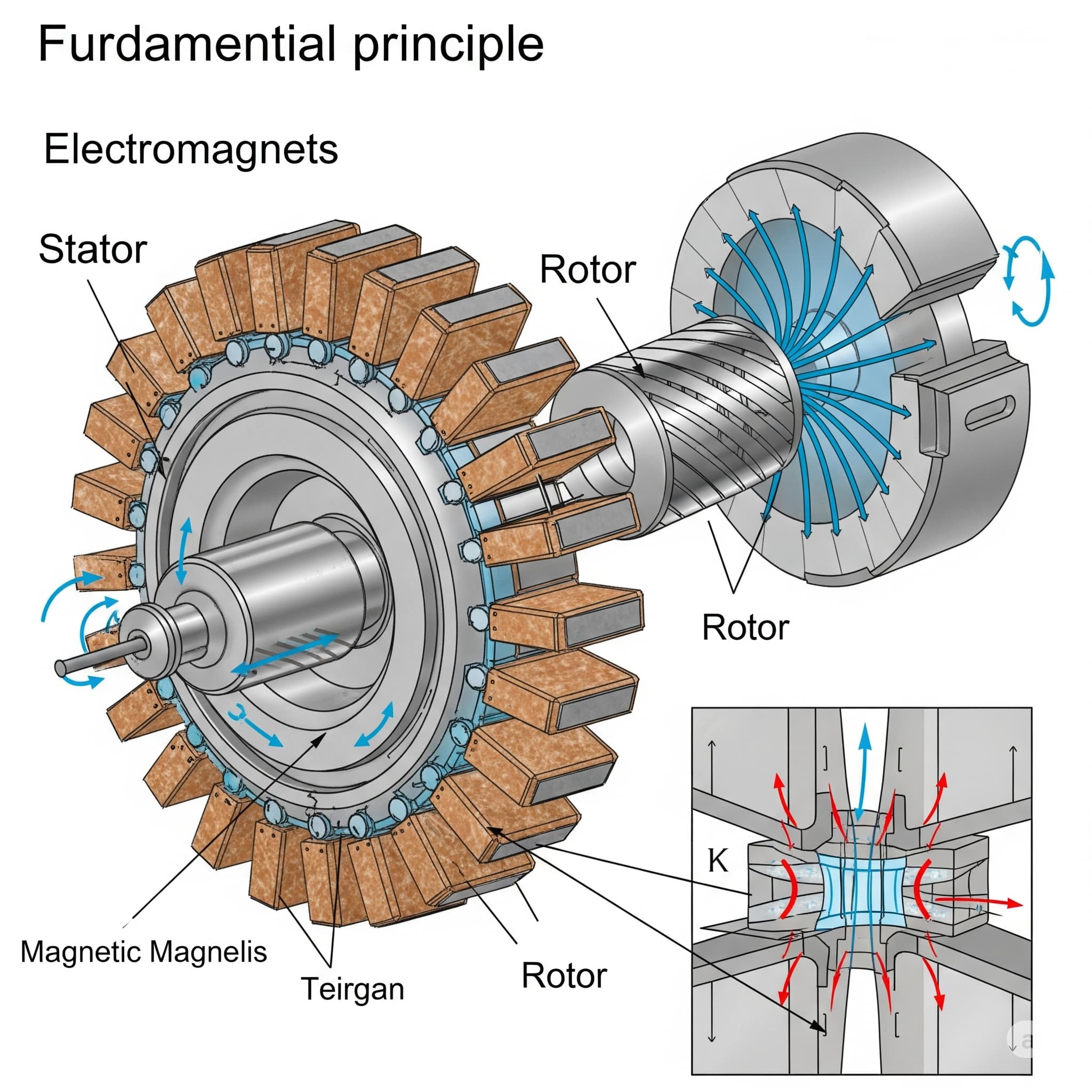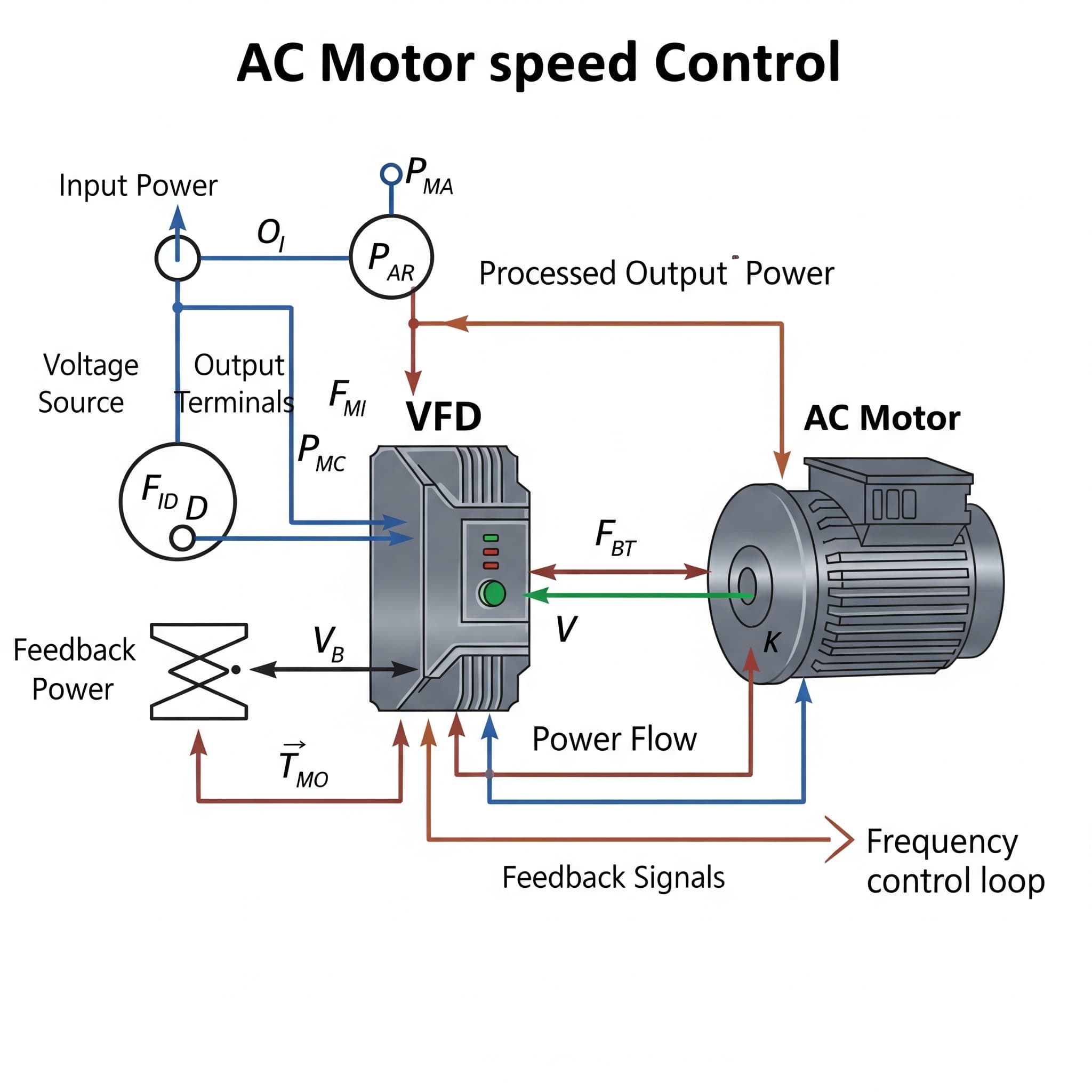
AC Motor Principles
An AC motor, as the name suggests, is driven by alternating current. Its basic principle relies on electromagnetic induction: a rotating magnetic field interacts with a conductor to generate torque. Unlike DC motors, AC motors usually don’t require brushes or commutators, resulting in a simpler, more reliable structure and lower maintenance costs.
AC motors are mainly classified into two types: Induction Motors and Synchronous Motors.
- Induction Motors: This is the most common type of AC motor. Its rotor (usually squirrel-cage or wound-rotor) doesn’t receive power externally. When AC is supplied to the stator, a rotating magnetic field is produced, which induces current in the rotor. This induced current then generates its own magnetic field. The interaction between these two fields creates torque that drives the rotor. The speed of an induction motor is always slightly less than the synchronous speed (the speed of the stator’s magnetic field). This difference is known as “slip.”
- Synchronous Motors: The rotor in a synchronous motor is typically a permanent magnet or has windings excited by DC. The stator also produces a rotating magnetic field when energized by AC. Unlike induction motors, in synchronous motors, the rotor rotates in perfect sync with the stator field—i.e., at synchronous speed—resulting in zero slip. This makes synchronous motors suitable for applications requiring precise speed control.
How to Control the Speed of AC Motors

Speed control of AC motors is mainly achieved by adjusting the supply frequency or stator pole count. In modern industrial settings, Variable Frequency Drives (VFDs) are the most common—and efficient—method.
Main methods include:
- Variable-Frequency & Variable-Voltage Control (VFD): This is the most widely used method. A VFD adjusts the power frequency (f) and voltage (V) supplied to the motor. For an induction motor, the synchronous speed (Ns) is given by the formula Ns = (120 × f) / P, where P is the number of poles. Therefore, changing frequency directly adjusts motor speed. To keep magnetic flux consistent, the voltage is proportionally adjusted to maintain a constant V/f ratio. Benefits include wide speed range, high precision, fast response, and significant energy savings.
- Pole-Changing: Used in specially designed motors (e.g., dual-speed motors), this method changes the effective number of stator poles by reconfiguring the stator windings. Since Ns is inversely proportional to pole count, changing poles enables discrete speed changes. However, it only offers fixed speed levels and has a more complex structure, making it less flexible than VFDs.
- Slip Control: This method targets wound-rotor induction motors. Speed is controlled by altering rotor circuit resistance via external resistors, adjusting slip. Because much energy is lost as heat in the resistors, this method is inefficient and has limited speed range, and it’s rarely used nowadays.
In summary, VFDs are the mainstream and most efficient method for AC motor speed control today, greatly expanding their applications and performance in industrial control systems.
AC Motor Controllers
An AC motor controller—commonly called a VFD (Variable Frequency Drive) or VSD (Variable Speed Drive)—is an electronic device used to precisely control the speed of AC motors. Traditionally, motor speed is determined by supply frequency and pole count, but with a VFD, you can dynamically adjust both frequency and voltage.
Key functions include:
- Variable Frequency & Voltage Output: Core function—controls motor speed and torque.
- Soft Start/Stop: Prevents inrush current and mechanical stress.
- Energy Savings: Reduces energy consumption under light loads.
- Protection Features: Guards against overcurrent, overvoltage, overheating, undervoltage, etc.
- Power Factor Correction: Improves energy efficiency.
Recommended: CYEI (Zhang-Yi) AC Motors
If you're in the market for high-quality AC motors, we recommend Zhang-Yi Electric:
- Variety: Offers horizontal (AEEF series) and vertical (AEVF series) motors with precision-cast housings and elegant designs.
- High Compatibility & Easy Maintenance: Universal standards, interchangeable parts, and easy upkeep.
- Precision Construction: Unique winding designs and precision bearings ensure high accuracy.
- Excellent Performance: Durable, low vibration and noise, stable operation.
- Customizable: Voltage and speed options are customizable—custom specs welcome.
Jang-Yih also manufactures DC motors, pumps, and permanent magnet motors, providing a broad range of options.







